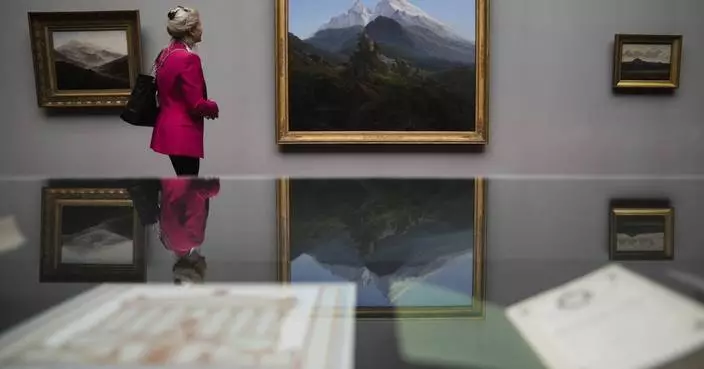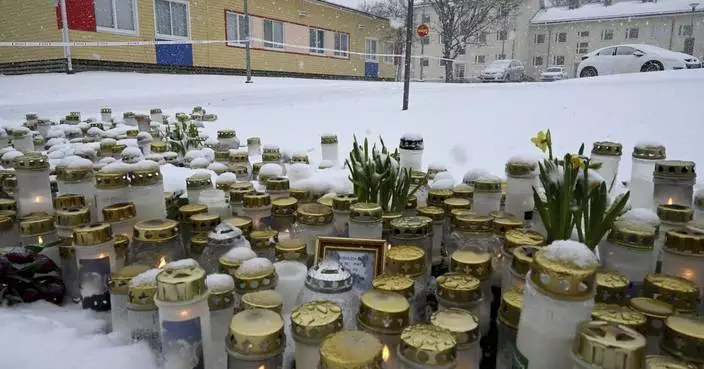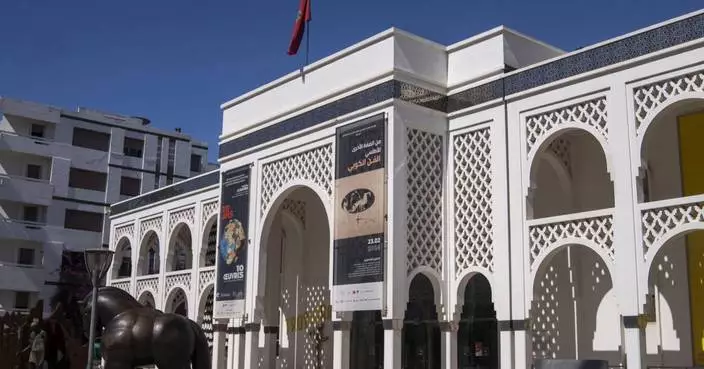A young Chinese artist became an overnight sensation when she presented a stunning contemporary adaptation of an ancient painting on a popular television show last weekend.
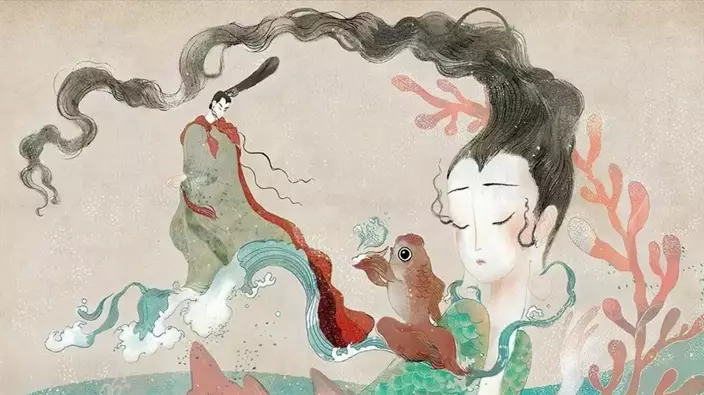
Photo by Ye Luying
The hit variety show National Treasure, which aired on China Central Television, introduced the ancient Chinese painting “Nymph of the Luo River” by Gu Kaizhi of the East Jin Dynasty (317-420) at the same time as Ye Luying's modern version in her picture book.
Click to Gallery
A young Chinese artist became an overnight sensation when she presented a stunning contemporary adaptation of an ancient painting on a popular television show last weekend.
The hit variety show National Treasure, which aired on China Central Television, introduced the ancient Chinese painting “Nymph of the Luo River” by Gu Kaizhi of the East Jin Dynasty (317-420) at the same time as Ye Luying's modern version in her picture book.
Gu’s painting was an inspired illustration of an essay written by Cao Zhi, a poet of China’s Three Kingdoms period (220-280), in which he depicted his imagined romantic encounter and separation with the Nymph of the Luo River.
Ye Luying, 25, is one of the generation dubbed the “post-90s,” a reference to those who were born in the 1990s. After graduating from the Chinese Academy of Art and studying abroad, she now works as a teacher at the academy.
She started to immerse herself in libraries after returning to her hometown in Hangzhou city, Zhejiang Province, until she came across with the Nymph of the Luo River again after graduation.
“The Chinese culture, with its long history and profound contents, is like a huge treasure to me. It has nourished my works and would continue to do so in my entire career life,” Ye said at the variety show. “I want to share the Oriental beauty with everyone.”
“The computer has its advantage. For example, the colors would be more saturated, refreshing and are capable of presenting more layers of changes,” said Ye. “It’s an era of rapid development, with the technology leaping forward.
Her own cartoon-style “Nymph of the Luo River” amazed the audience along with the exhibited Song copy of Gu’s painting recommended by the Liaoning Provincial Museum. Many say that she perfectly combines the traditional art with modern features and has brought high-end art closer to ordinary people.
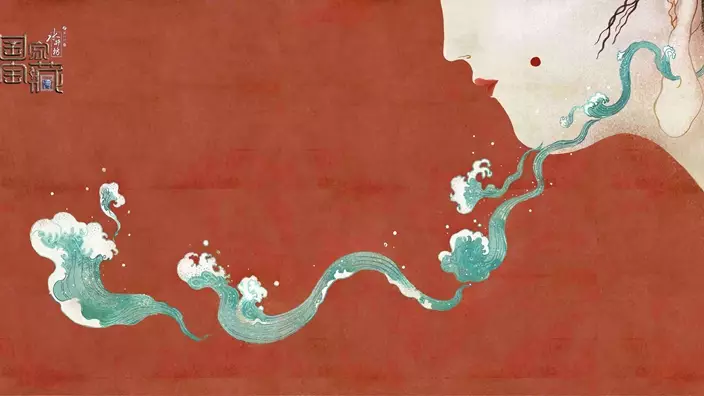
A picture from Ye Luying's picture book "Nymph of the Luo River." /Photo by Ye Luying
Gu’s painting was an inspired illustration of an essay written by Cao Zhi, a poet of China’s Three Kingdoms period (220-280), in which he depicted his imagined romantic encounter and separation with the Nymph of the Luo River.
A talented calligrapher and painter, Gu Kaizhi is also known for his theories in Chinese painting that laid foundations for its new development, especially his emphasis on the eyes of the figures.
“The eyes were the spirit and the decisive factor in figure paintings,” Gu wrote down in his theoretical works.
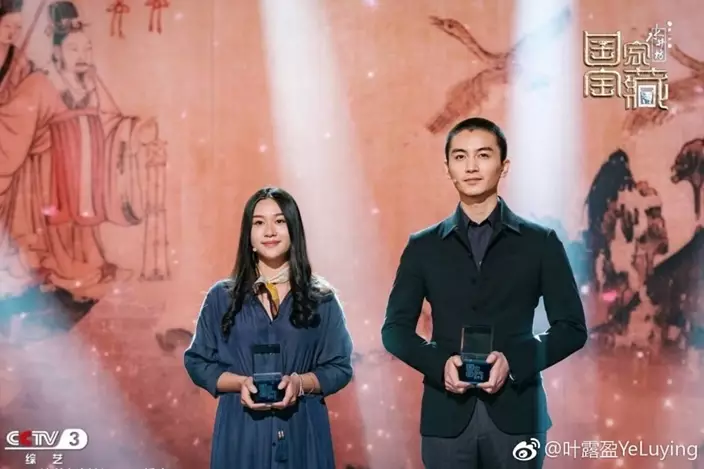
Ye Luying (L) and Chen Xiao, Chinese actor, appear at the variety show "National Treasure". /Photo via Ye Luying
Ye Luying, 25, is one of the generation dubbed the “post-90s,” a reference to those who were born in the 1990s. After graduating from the Chinese Academy of Art and studying abroad, she now works as a teacher at the academy.
While overseas she came to the conclusion that the country’s 5,000-year cultural heritage is rooted in her spirit.
“I was so impressed by the Norse mythology that I couldn’t help wondering 'do we have such stories in China, and what are the aesthetic symbols of the Chinese',” said Ye.

The Song copy of Gu Kaizhi's painting "Nymph of the Luo River." /Photo via Liaoning Provincial Museum
She started to immerse herself in libraries after returning to her hometown in Hangzhou city, Zhejiang Province, until she came across with the Nymph of the Luo River again after graduation.
She said she was inspired not only by Gu Kaizhi’s painting, but also his theories of comparing lines in painting to silk. Cao Zhi’s depiction of the nymph in his essay has also provided her with numerous ideas.
From then on, Ye has dug deeper into the ancient Chinese literature and culture and was amazed by what she found out.
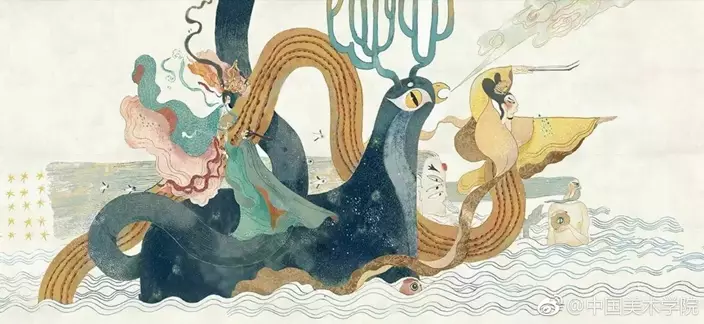
A picture from Ye Luying's picture book "Nymph of the Luo River." /Photo by Ye Luying
“The Chinese culture, with its long history and profound contents, is like a huge treasure to me. It has nourished my works and would continue to do so in my entire career life,” Ye said at the variety show. “I want to share the Oriental beauty with everyone.”
She spent half a year painting her picture book, which was based on the ancestors’ works but invigorated with her wild imagination.
The Song copy of Gu’s painting was 6.4 meters in length, and Ye’s manuscript is about 11 meters in general. She completed a large part of her painting on the computer.
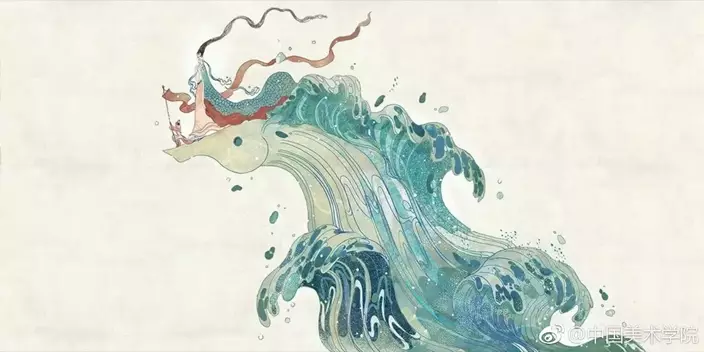
A picture from Ye Luying's picture book "Nymph of the Luo River". /Photo by Ye Luying
“The computer has its advantage. For example, the colors would be more saturated, refreshing and are capable of presenting more layers of changes,” said Ye. “It’s an era of rapid development, with the technology leaping forward.
“New elements should be infused into the classic artistic works.”
Her picture book has become a rising star in the field of fine art, and has grabbed a handful of domestic awards. It was also exhibited at the Frankfurt Book Fair.
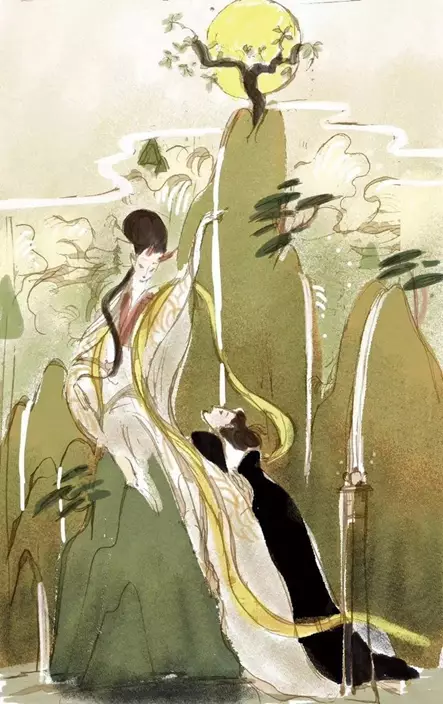
A Ye Luying painting. /Photo by Ye Luying
Dong Baohou, painter and researcher of the Liaoning Provincial Museum, speaks highly of Ye’s painting.
“The ‘Nymph of the Luo River’ is an important piece of work in the Chinese history of art, but it is still far away from the public. Ye has inherited the classical beauty from the ancient painting, and expressed it in a modern way, which is great,” said Dong.
Ye’s picture book is scheduled to be published in April.
JOHANNESBURG (AP) — A selection of South African artworks produced during the country’s apartheid era which ended up in foreign art collections is on display in Johannesburg to mark 30 years since the country's transition to democracy in 1994.
Most of the artworks were taken out of the country by foreign tourists and diplomats who had viewed them at the Australian Embassy in the capital, Pretoria. The embassy had opened its doors to Black artists from the townships to be recognized and have their artworks on full display to the public.
The artworks, which reflect the daily struggles of the country’s Black majority during the apartheid era and the effects of racial segregation policies, are on display alongside works by some of South Africa’s exciting contemporary artists.
The exhibition creates a blend of perspectives on South Africa through the eyes of artists who lived during and after the country's most difficult period.
It is a culmination of efforts to repatriate African artworks, artifacts and valuable cultural items to Africa by organizations such as the Ifa Lethu Foundation, which is hosting the exhibition.
The organization has repatriated more than 700 pieces, including works by South African artist Gerard Sekoto, who died in Paris in 1993.
Similar efforts have been made across Africa, including in Benin and Nigeria.
Some of the highlights of the exhibit are an undated piece titled “For the Children” by renowned South African artist and sculptor Dumile Feni, who died in New York in 1991 before he could return to South Africa to witness the end of apartheid.
A 1987 piece titled “Mineworkers” by South African artist Mike Khali which addresses the plight of migrant workers in South African gold mines is also part of the exhibition, which is being held at the Apartheid Museum in Johannesburg.
Michael Selekane, a contemporary artist whose work is part of the exhibition, pointed out some of the technical hurdles faced by artists who came before him.
“The use of material was limited for them. That is why most of their work is black and white, and it is prints. Painting was an expensive medium to work on, their conditions were tough,” he said.
Selekane's “Rosy Future” and “Shattered” are part of the exhibition.
“We need to reflect on the fact that we did not just magically emerge as artists, there were people who laid the way forward regardless of whether their context was difficult, complicated, undoable, they were resilient in what they were doing,” said Lawrence Lemaoana, a contemporary artist whose work is also on show.
“In this period, art by black artists was not considered worth including in South African museums, galleries or corporate or private collections,” notes exhibition curator Carol Brown.
“With the exception of a few outliers — including workshops such as Polly Street in Johannesburg and the Evangelical Lutheran Centre at Rorke’s Drift, established by foreign missionaries in the former province of Natal — art education for black artists was minimal."
“For much of their lives, art materials, books and exhibitions were denied to them,” Brown writes in her curator’s statement.
The works have been grouped thematically, she says: Suffering and Conflict, Dreams of the Future, Leisure and Culture, City of Gold, Whose Land Is It? and The Beginning.
“These themes invite contemplation of the socio-political landscape of present-day South Africa, but also allow us to see how the past influences and shapes the present — and how contemporary visions can highlight the modernity in the overlooked and undervalued art produced under the terrible constraints of apartheid,” she said.
The exhibition runs until July 31.
AP Africa news: https://apnews.com/hub/africa
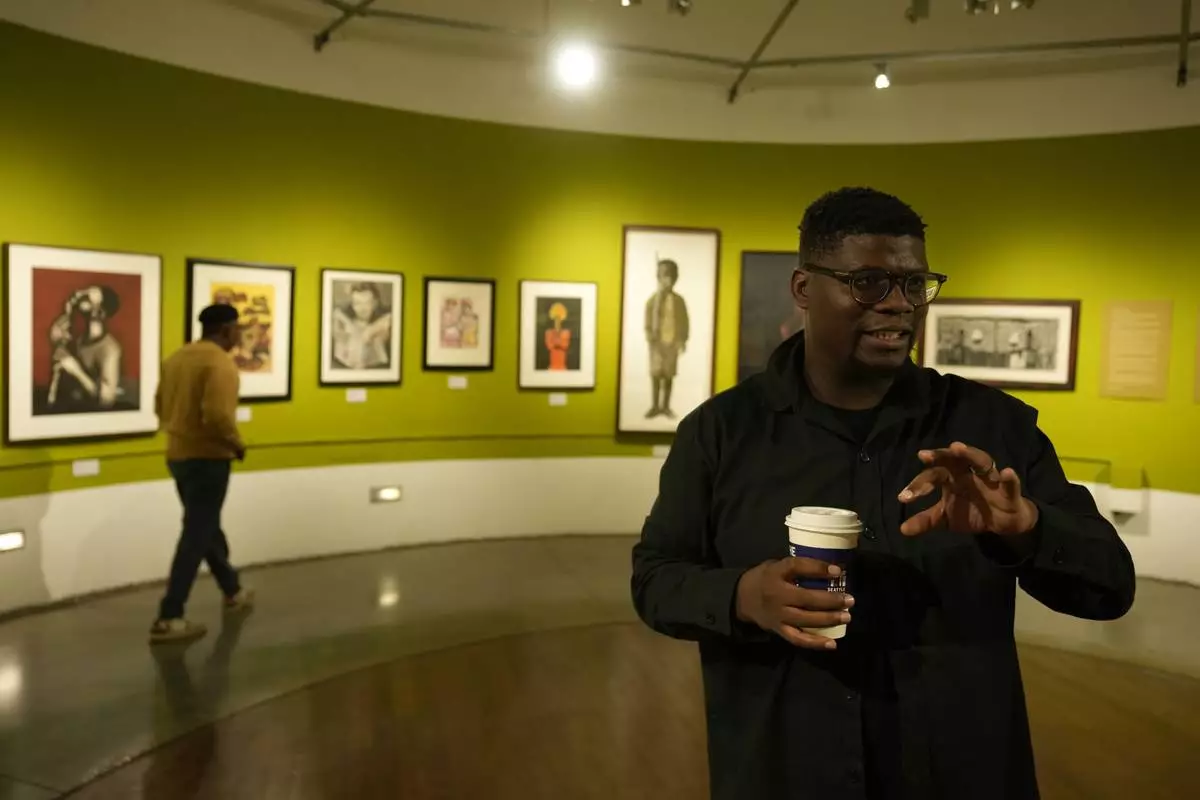
Artist Lawrence Lemaoana at an exhibition at the Apartheid Museum in Johannesburg, South Africa, Wednesday, April 24, 2024. A selection of artworks which were produced during the country's apartheid era and ended up in foreign art collections are on display to mark 30 years since the country's transition to democracy in 1994. (AP Photo/Themba Hadebe)
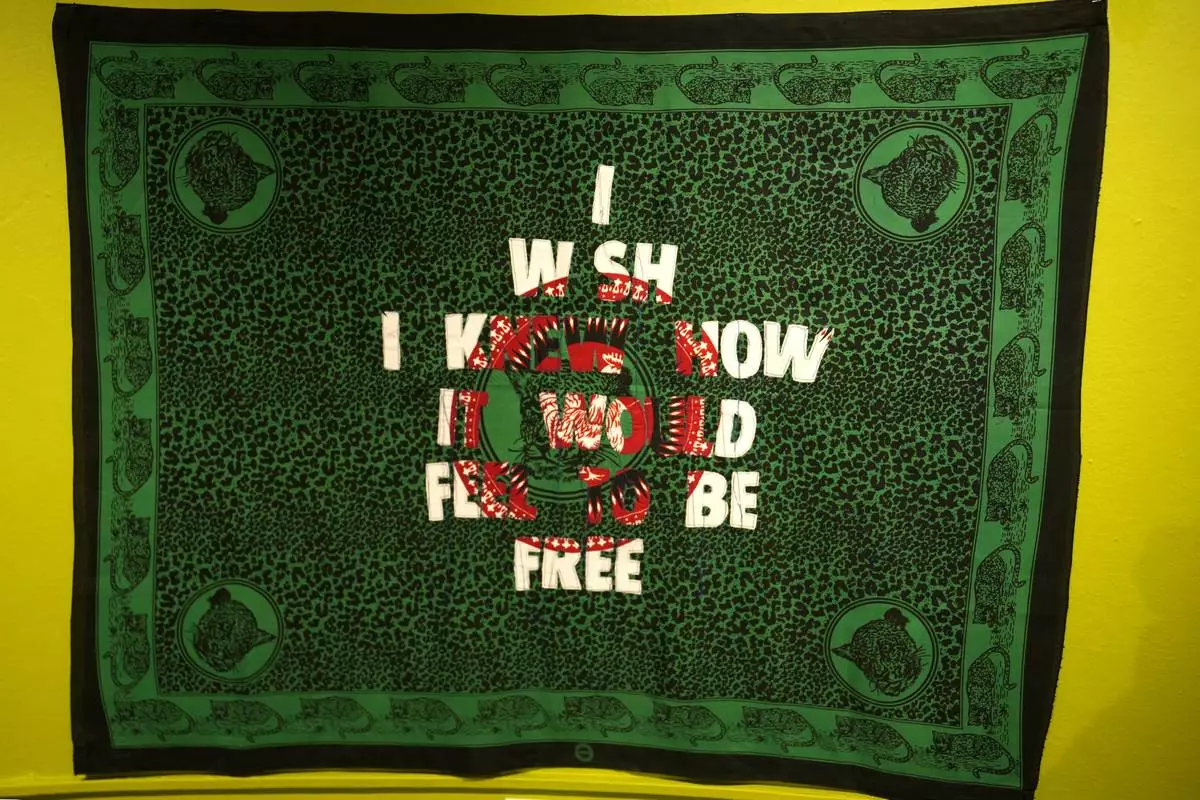
An work by artist Lawrence Lemaoana at an exhibition at the Apartheid Museum in Johannesburg, South Africa, Wednesday, April 24, 2024. A selection of artworks which were produced during the country's apartheid era and ended up in foreign art collections are on display to mark 30 years since the country's transition to democracy in 1994. (AP Photo/Themba Hadebe)
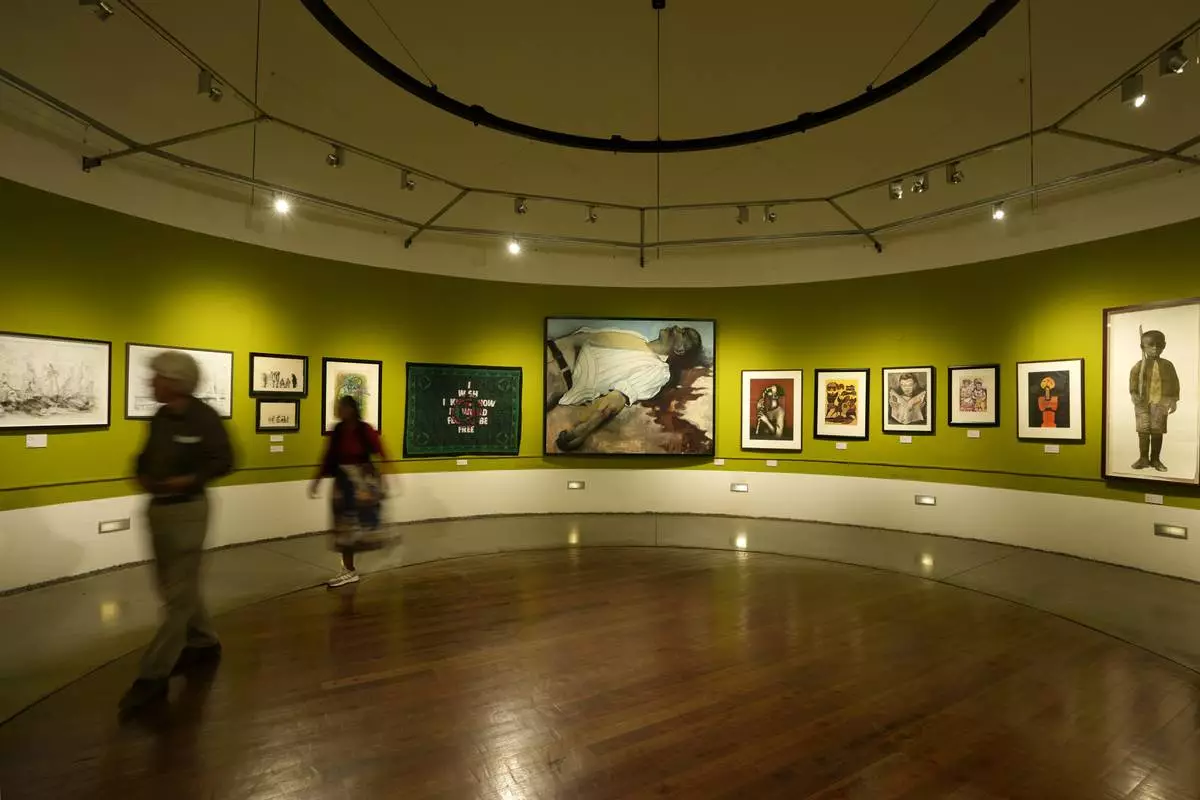
Visitors view an art exhibition at the Apartheid Museum in Johannesburg, South Africa, Wednesday, April 24, 2024. A selection of artworks which were produced during the country's apartheid era and ended up in foreign art collections are on display to mark 30 years since the country's transition to democracy in 1994. (AP Photo/Themba Hadebe)

Artist Michael Selekane takes a photograph of his work at an exhibition at the Apartheid Museum in Johannesburg, South Africa, Wednesday, April 24, 2024. A selection of artworks which were produced during the country's apartheid era and ended up in foreign art collections are on display to mark 30 years since the country's transition to democracy in 1994. (AP Photo/Themba Hadebe)

Artist Lawrence Lemaoana at an exhibition at the Apartheid Museum in Johannesburg, South Africa, Wednesday, April 24, 2024. A selection of artworks which were produced during the country's apartheid era and ended up in foreign art collections are on display to mark 30 years since the country's transition to democracy in 1994. (AP Photo/Themba Hadebe)
















